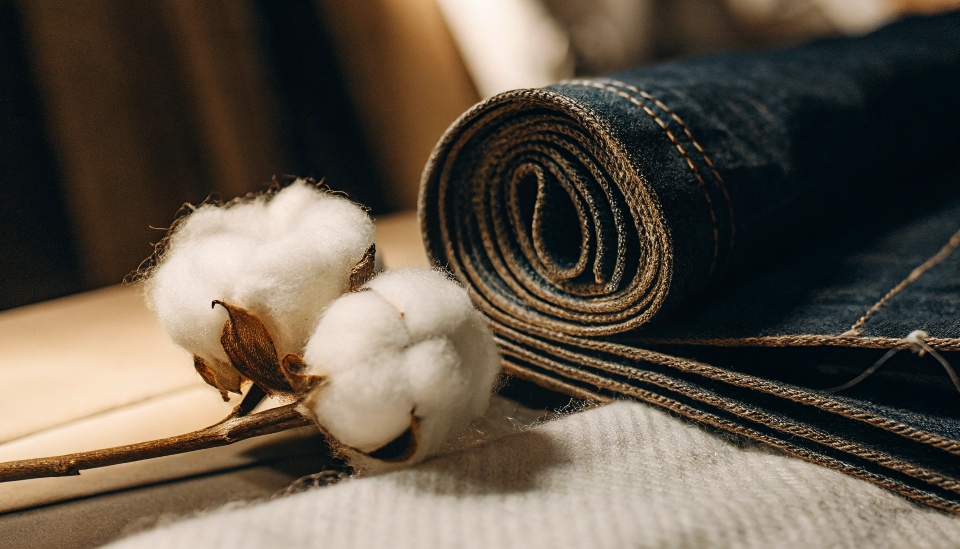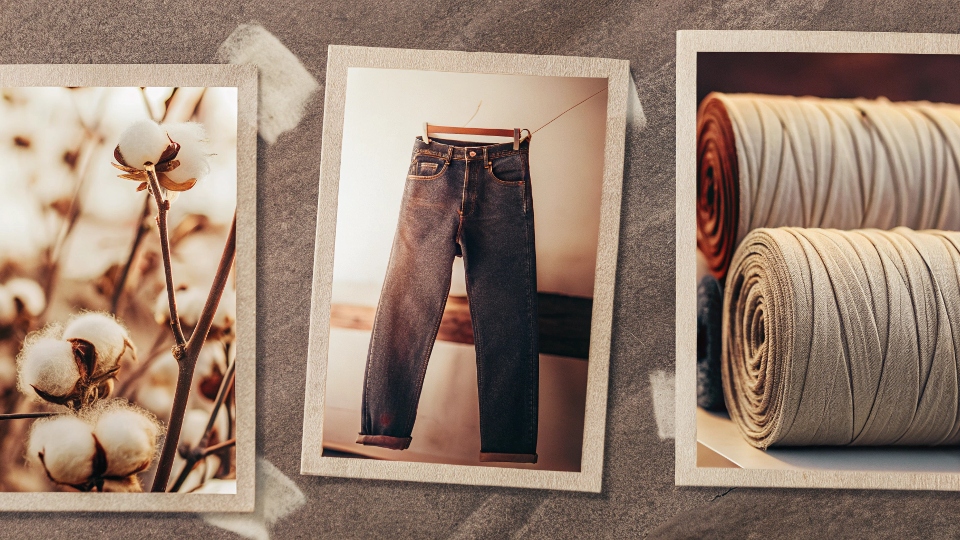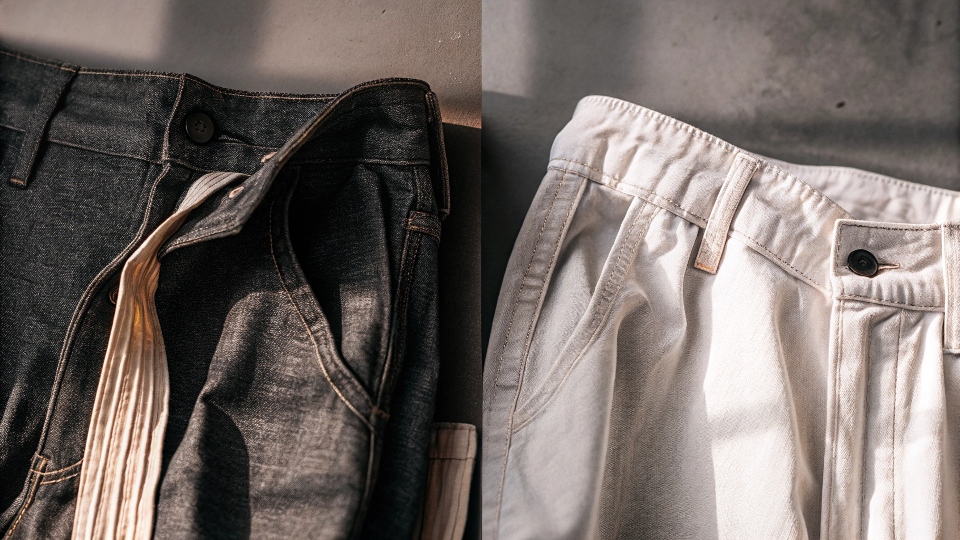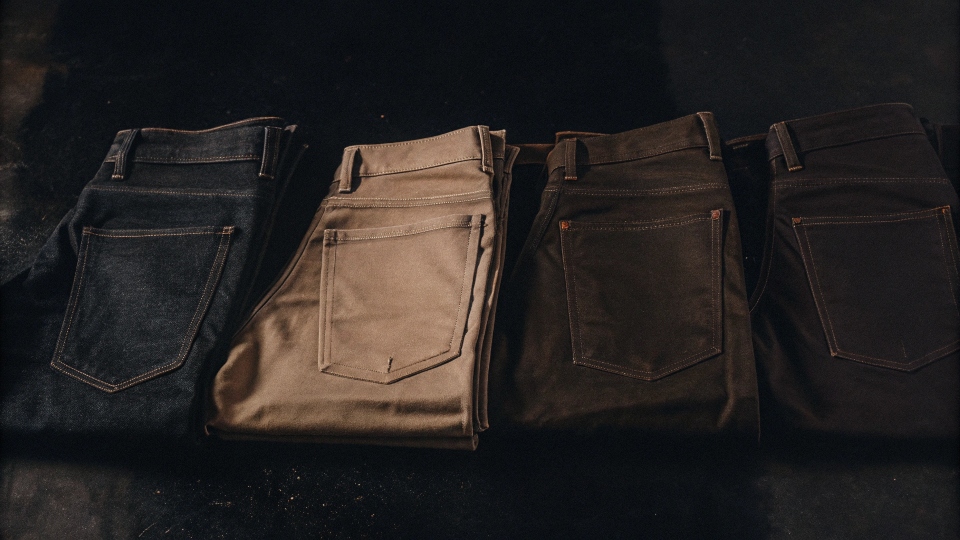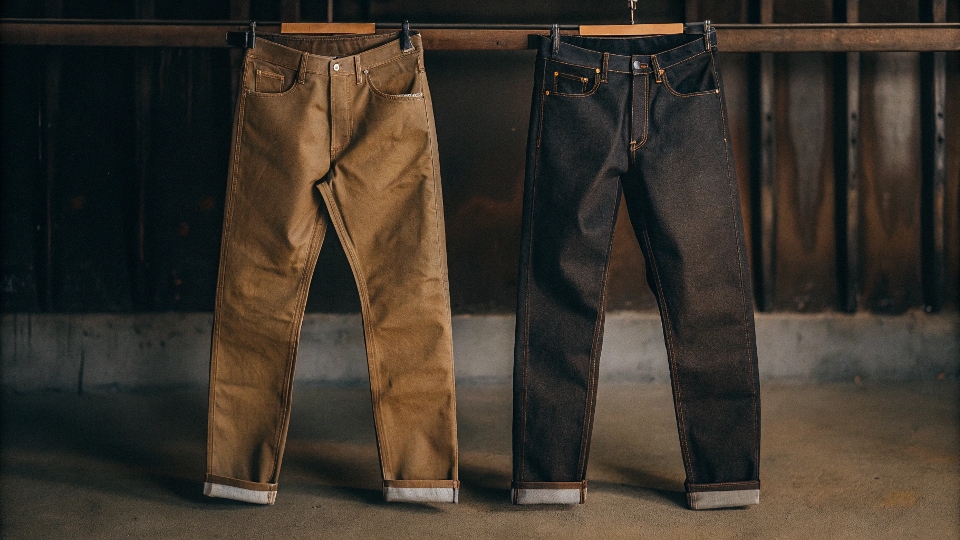You pull on your favorite jeans and glance at the tag: "100% Cotton1." But everyone calls them "denim." This common confusion makes you wonder what your pants are actually made of.
All denim is made from cotton, but not all cotton fabric is denim2. Denim is a specific type of strong cotton fabric created with a twill weave, giving it its famous diagonal lines and impressive durability.
This might sound like a riddle, but it's a fundamental question I get all the time. After two decades of running the DiZNEW denim factory, I can tell you that understanding this relationship is the key to knowing why your jeans look and feel the way they do.
It all comes down to how we take the humble cotton plant and transform it into the world's most iconic fabric. The difference isn't the material itself, but how we process it.
Are jeans cotton or denim?
So, are you wearing a pair of "cottons" or a pair of "denims"? The terms seem interchangeable, but knowing the precise relationship helps you choose better jeans in the future and understand their care.
You're wearing both. Jeans are crafted from denim, and denim is a rugged fabric made entirely from cotton. Think of it like this: all denim is cotton, but it's a specific category of cotton cloth defined by its unique weave.
The journey from a field to your closet explains everything. In my factory, we start with raw cotton3, a soft, fluffy fiber. We spin this fiber into coarse, strong yarn.
Here's where the magic happens: the weave. To make denim, we use a specific technique called a "twill weave." This involves weaving dyed warp threads (usually indigo blue) over and under undyed weft threads (usually white).
This process creates the characteristic diagonal pattern on the fabric's surface and is what gives denim its legendary strength. A simple cotton t-shirt, by contrast, uses a much simpler knit weave, which is why it feels completely different.
| Fabric | Raw Material | Weave Type | Key Characteristic |
|---|---|---|---|
| Denim | Cotton | Twill Weave | Strong, durable, diagonal pattern |
| T-Shirt Jersey | Cotton | Knit | Soft, stretchy, comfortable |
| Dress Shirt Poplin | Cotton | Plain Weave | Crisp, smooth, lightweight |
Is jean considered cotton?
When you read a label that says "100% Cotton," should you think of your jeans the same way you think of a soft cotton bedsheet? The label is true, but it doesn't tell the whole story.
Yes, absolutely. Jean fabric, which is almost always denim, is a pure cotton product. The "100% Cotton" label is technically correct. However, denim is a heavy-duty subcategory of cotton, distinguished by its weave, weight, and durability, not its source material.
A designer like Dean knows that the phrase "100% Cotton" can describe hundreds of different fabrics. The final feel and function of a garment come from the weave. A cotton poplin shirt and a denim jacket are both made from cotton, but they serve completely different purposes.
This is because of the twill weave4. This weave does two important things. First, it makes the fabric incredibly durable and resistant to tears, which is why it was first adopted for workwear. Second, it allows for unique fading. The indigo dye5 on the warp threads is on the surface.
As you wear your jeans, that dye rubs off, exposing the white core of the cotton threads and creating fade patterns that are unique to you. A regular piece of cotton that's fully dyed would just lose color evenly. This unique aging process is a hallmark of true denim.
Are jeans actually denim?
You hear people talk about "denim jeans" as well as "corduroy jeans." This makes you wonder: are all pants we call "jeans" automatically made of denim, or has the meaning of the word changed?
Traditionally, yes. The word "jeans" referred to trousers made specifically from denim fabric. However, today the term "jeans" is often used to describe a style of pants—typically one with five pockets—regardless of the material it's made from.
This is a great point of confusion that comes from the evolution of fashion. Historically, the two words were intertwined. When Jacob Davis and Levi Strauss first patented their riveted work pants in the 1870s, they were making them from denim.
The product was "jeans." Over the next century, that five-pocket, riveted silhouette became so iconic that designers started making pants with the exact same cut but using different fabrics. This is why you can now buy pants marketed as "corduroy jeans" or "canvas jeans."
They have the familiar style—the five pockets, the yoke on the back, the cut—but they are not made from denim. So in my factory, a client might ask for a "five-pocket twill pant." It looks like a classic jean, but the fabric tells a different story.
| Term | Refers To The... | Example |
|---|---|---|
| Denim | Fabric | A specific cotton twill weave. |
| Jeans (Traditional) | Fabric & Style | Pants made from denim. |
| Jeans (Modern) | Style | Five-pocket pants made from any fabric. |
Is 100% cotton jeans denim?
You pick up a pair of jeans that feel very rigid and stiff, not soft like you'd expect from cotton. The tag says "100% cotton." Is this still real, authentic denim, or is it a different material?
Yes, 100% cotton jeans are the most traditional and authentic form of denim. The stiffness you feel comes from the coarse yarn, the dense twill weave, and often a layer of starch ("sizing") added at the factory to make the fabric easier to handle during sewing.
That rigid feel is a feature, not a flaw. This is what we in the industry call "raw" or "rigid" denim. It's the original recipe, prized by denim purists6 because it allows the wearer to create their own unique story on the pants.
The stiffness causes creases to form based on your body and how you move. Over months of wear, those creases will fade, creating a map of your life right on your legs. However, the modern apparel market is all about instant comfort. That is why most jeans you buy today are not 100% cotton.
They are usually a blend, like 98% cotton and 2% elastane (sometimes called Spandex or Lycra). That tiny bit of stretch makes a slim-fit jean comfortable from the very first wear. In my factory, we produce both, but they are for different customers. The 100% cotton jean is for the enthusiast who enjoys the "break-in" journey.
Conclusion
In short, jeans are made from denim, and denim is simply a special and strong type of cotton. Understanding this simple fact unlocks the entire story of your favorite pair of pants.
-
Explore the meaning behind '100% Cotton' labels to understand the quality and characteristics of your denim. ↩
-
Learn about the unique properties of denim fabric and why it's different from other cotton fabrics. ↩
-
Discover the significance of raw cotton in the production of authentic denim. ↩
-
Discover how the twill weave contributes to denim's strength and durability, setting it apart from other fabrics. ↩
-
Explore the role of indigo dye in creating unique fade patterns in denim jeans. ↩
-
Explore the world of denim enthusiasts and what they value in their jeans. ↩

